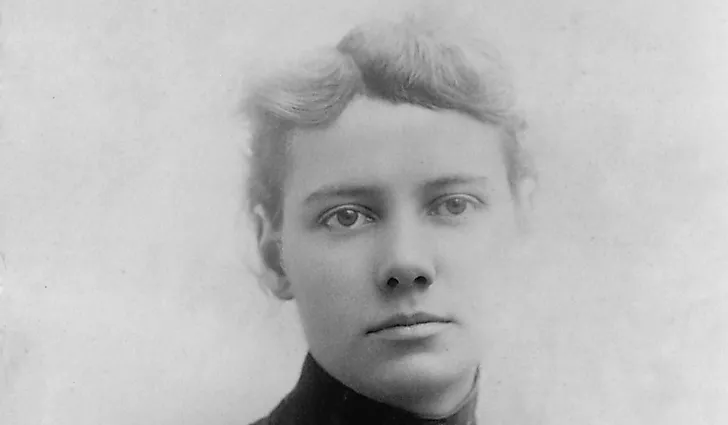Who Was Nellie Bly and What Was She Famous For?

Born Elizabeth Jane Cochran, Nellie Bly was famed for pioneering new investigative journalism when she worked as an undercover journalist in New York’s most notorious mental institution. She is also well-known for making a trip around the world for a record 72 days, beating a fictitious record that had been set by Phileas Fogg. Apart from journalism, Nellie was also an industrialist, inventor, and writer.
Early Life
Nellie Bly was born on May 5, 1864, in Cochran’s Mill which was owned by her father Michael Cochran. Her father was also a local judge, postmaster, and a merchant in Cochran Mills, Pennsylvania, which is now part of Burrell Township, Pittsburgh. Michael had 15 children from his two marriages; ten with his first wife Catherine and five with the second wife Mary Jane Kennedy who was also Bly’s mother. The young Elizabeth was the last of the 15 children and was often called “Pinky” because of her love for pink dresses. Her father died in 1870 when she was only six years, forcing her to drop out of boarding school because of lack of funds. Her mother remarried John Ford who was a violent and abusive husband forcing her to file for a divorce in 1878.
Career
First Reporting Job
Bly’s mother moved her family to Pittsburgh in 1880. While in Pittsburgh, the young Nellie came across an article in the Pittsburgh Dispatch titled What Girls Are Good For. The article dismissed women’s qualifications, suggesting that their roles were taking care of the house and the children. She wrote a response to the editor under pseudonym “Lonely Orphan Girl.” The editor was impressed by her writing and offered her an opportunity to write articles for the newspaper. At the time, female writers mostly used pen names and so she was given the name “Nellie Bly” from the song “Nelly Bly.” Nellie focused on the lives of working women, writing investigative pieces on women working in factories. The factory owners complained about her writing and she was reassigned to cover women’s fashion and other interest articles. She soon left for Mexico where she concentrated on reporting the customs and lives of the Mexicans. Her collections were published in a book titled Six Months in Mexico. In one of her dispatches, criticized the Mexican authority for imprisoning a journalist, forcing the authorities to expel her from Mexico.
Mad House Expose
In 1887, Nellie left the Pittsburgh Dispatch and went to New York City. However, she could not find newspaper work because she was a woman. After four months, she was hired by Joseph Pulitzer of New York World for an undercover assignment. Her first assignment was to feign insanity to investigate reports of neglect and brutality in asylums. She first checked in at Bellevue and was later transferred to Blackwell’s Island. With the help of the newspaper lawyers, she was released from the asylum after ten days as was planned. Bly wrote about the horrible conditions and her experience at the asylum. In 1887, her report was published in a book titled Ten Days in a Mad-House, in which she also proposed several reforms.
Around The World In 72 Days And Later Years
In 1888, Bly committed to actualizing the fictional Around the world in 80 Days. On November 14, 1889, she started her 40,070 km journey. She traveled alone for most of the journey. On January 25, 1890, just over 72 days, Bly arrived in New York. In 1895, Nellie met and married Robert Seaman who was 42 years older than her at the time. She soon left her journalism work to help her husband manage his iron manufacturing company. Unfortunately, her husband died in 1904. Bly died in 1922, with the cause of death being pneumonia.







